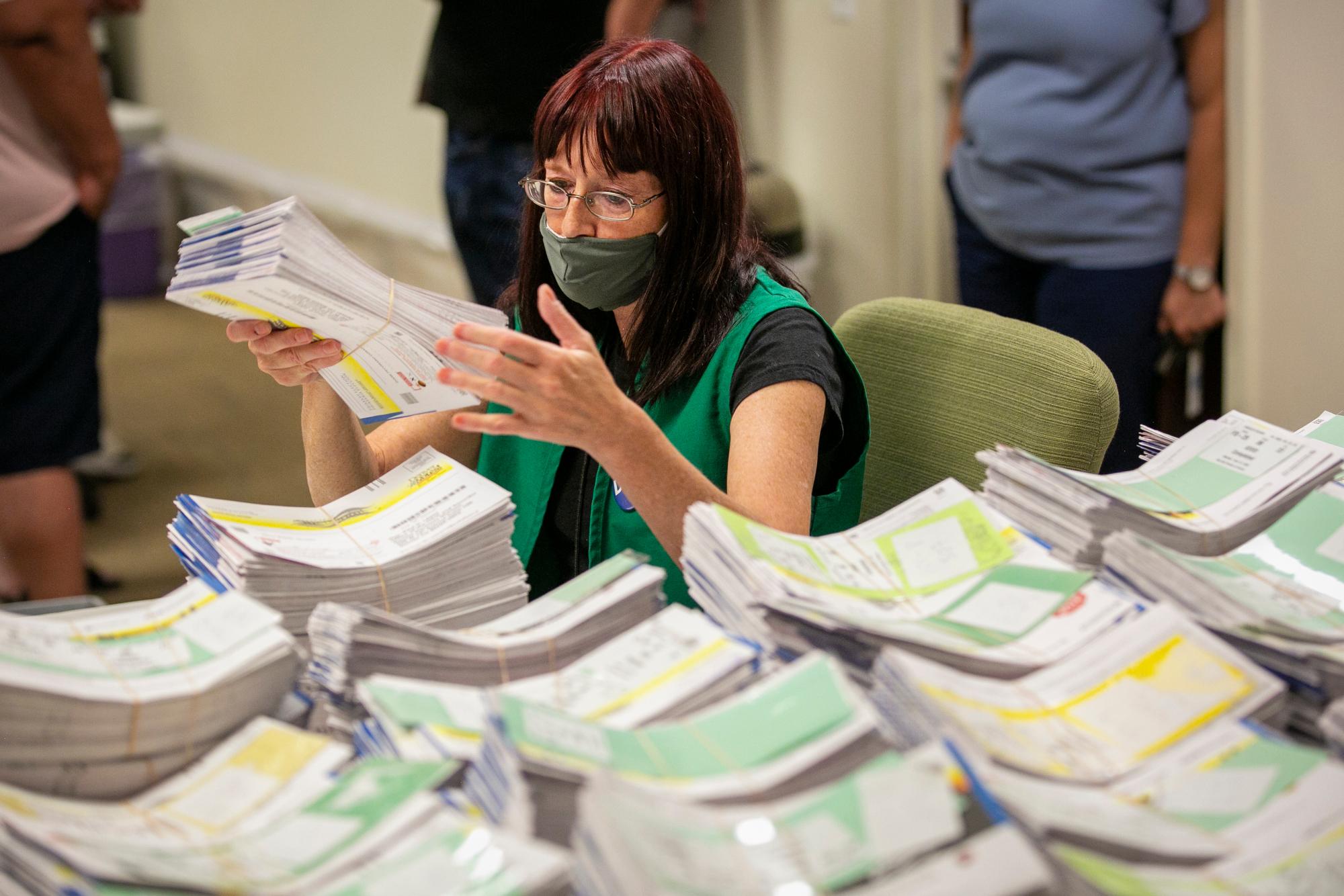
Colorado saw its primary turnout break records in Tuesday’s elections, the result of a political year like no other and the state’s recent election reforms.
Here’s what analysts and experts have gleaned from the preliminary results.
How did voters break down?
Nearly 1.6 million people voted in Colorado’s primary elections on Tuesday, weighing in on Congressional and state legislative races along with local contests.
It’s a sharp increase from the 2018 primaries, when about 1.2 million people cast ballots in primaries to select the state’s candidates for governor and other roles. That was the first state primary in which unaffiliated voters were allowed to participate.
The higher turnout could reflect greater interest in the elections during this presidential cycle.
“The political environment in Colorado is extremely charged right now. They have really lit a fire underneath a lot of people wanting to have their voice heard and participate,” said Republican pollster David Flaherty, CEO of Magellan Strategies.
The Democratic contests drew the most votes by far: about 918,000, compared to 565,000 for Republicans, according to early figures. That happened in part because unaffiliated voters are voting in much larger numbers — and they flocked to Democratic contests this year.

Higher Democratic participation could be linked to the top-of-the-ticket race between John Hickenlooper and Andrew Romanoff. Republicans were mostly deciding lower offices.
“That makes total sense. The nationally watched U.S. Senate primary was the sexiest race in town,” Republican consultant Tyler Sandberg said.
But it would also mean trouble for Republicans if unaffiliated voters — a growing faction — are getting invested in Democratic races.
“It’s also I think revealing about which party are these unaffiliated voters choosing to vote for. Where do they want to have their voice heard? At least in 2018 and 2020, it’s overwhelmingly on the Democratic side,” Flaherty said. “It opened up a door, and it’s having a bigger impact for Democratic candidates where they do need to factor that in.”
What does Colorado’s turnout mean?
Total turnout among active voters was about 43 percent, compared to 35 percent in the 2018 primaries. That’s near the top of what you’ll see nationally for primaries.
And it was especially high for Democrats, hitting nearly 60 percent as they weighed in on the Hickenlooper-Romanoff race, according to data provided by Magellan Strategies.
Participation is high in Colorado for a few reasons. Unaffiliated voters may be getting more familiar with the primaries — they were only allowed to participate in primaries starting in 2018. The state’s mail voting system also kept the voting process running smoothly despite the pandemic: more than 99 percent of ballots arrived by mail or dropoff.
- With The Senate Race Down To Gardner Vs Hickenlooper, Where Is The Republican’s Path Forward?
- Trump Puts Health Care On The Table Between Sen. Cory Gardner And Hickenlooper
- Hickenlooper On His Primary Stumbles And Facing Cory Gardner: ‘I Am A Known Quantity’
- Hickenlooper Responds To Indigenous Women’s Demand He End Bid For Senate
The results could foreshadow high levels of voter engagement this November.
“I think you’re going to see unbelievable turnout in the fall,” Sandberg said.
But analysts warned against assuming that large Democratic turnout in this year’s primaries would mean another blue blowout in November. There is not a correlation between primary turnout and general election turnout, Flaherty said.
Where did the winners find their votes?
In the U.S. Senate primary, John Hickenlooper won in every county but one: lightly populated Saguache County, which Andrew Romanoff took. While preliminary results show Hickenlooper with a nearly 18 point victory, the margin was much closer in Boulder and Denver, where Romanoff trailed by fewer than five points.
Lauren Boebert, the Republican challenger, took several important population centers as she defeated U.S. Rep Scott Tipton. The counties that include Grand Junction, Montrose and Pueblo all helped her pull off the upset.

Boebert will face Democrat Diane Mitsch Bush in the general election.
Their district across western and southern Colorado reversed the statewide trend on Tuesday: Slightly more people voted in District 3’s Republican primary than the Democratic one, according to preliminary results.
Statewide, the primary election also showed some interesting age trends. In preliminary returns, people ages 18 to 44 made up a larger portion of the electorate than in 2018. If younger people show up in large numbers in November, it will be very difficult for Republicans to win, according to Flaherty, who provided the demographic data.
What’s at stake?
Colorado’s U.S. Senate election is critically important to both parties. A Hickenlooper victory over Cory Gardner would be a key step for Democrats to retake the Senate.
The Congressional race in District 3 is less important strategically. Democrats could fortify their majority in the U.S. House if they defeat Boebert and flip the seat. But it’s very unlikely to determine control of the chamber in the way the Senate race could. However, Boebert is sure to get intense national attention as a surprise-win MAGA candidate with a penchant for viral media moments.
At the state level, Republicans are very unlikely to regain control of the state legislature, though they could whittle down the majority, Sandberg said.
“Flipping (the control of either chamber) will be difficult, but I think it sets up for the flip in ‘22,” Sanderg said.
Flaherty’s more pessimistic.
“We think we’re going to lose more (seats) in the state Senate. The House is a pretty low number and it could go even lower,” he said.









